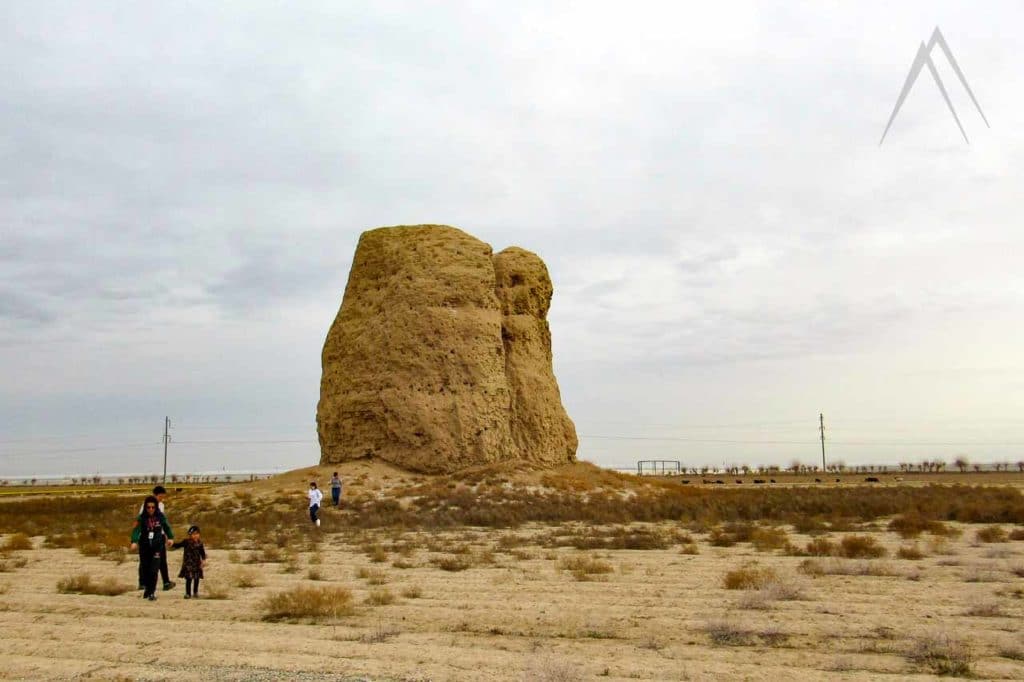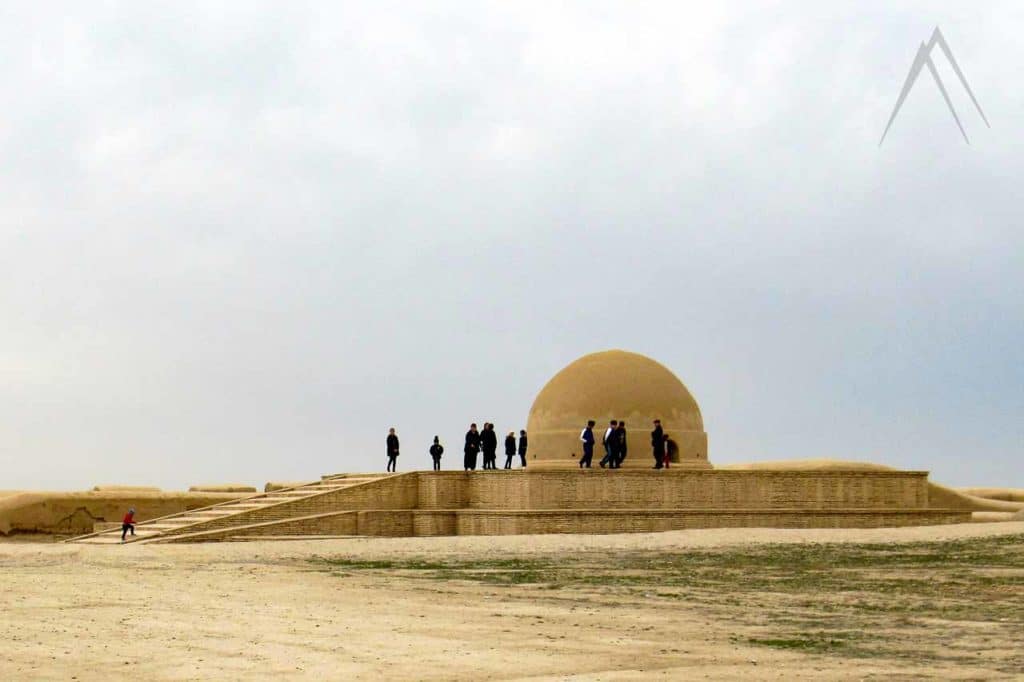Termez
Buddhist Monasteries
Central Asian Buddhist Monasteries
Islam has been the dominant religion in Central Asia for centuries so it is hard to imagine that nomadic shamanism, Persian Zoroastrianism, and Indian Buddhism ruled as the main beliefs in the area in the past. There are some signs of this throughout Central Asia if one looks from the right places. One of the best places are the archeological remains of Kara Tepe and Fayaz Tepe near Termez in Southern Uzbekistan, that can take you to the era when Buddhism bloomed in the area.
Buddhist Stupa of Zurmala
Zurmala Tower is 16m high brick-built structure that dates from the 1st to 2nd-century AD and it is possibly the oldest building still standing in Uzbekistan. It is the only remaining part of a vast Buddhist stupa (mound containing relics) that would originally have been clad in stone and richly decorated. Zuermala tower is the first Buddhist stupa along the road when you drive from modern Termez.
The tower has suffered greatly from time to time, but nevertheless, it still makes an impression. It is laid out of raw square bricks with a side of about 33 centimeters. All bricks have a distinctive mark in the form of a line and two holes. Such bricks were used in Bactria only in the Kushan time, at the beginning of the 3rd century AD. Later they were replaced by rectangular bricks. Scientists estimate that nearly 1,200,000 of these bricks were required to erect the stupa. The solid block of adobe bricks has a small relic chamber in the upper part. The erection of Zurmala is related to the Great Kushan, and its scale much bigger than Fayaztepa mortar. It shows the outstanding value of this building in Buddhist construction in the territory of Central Asia. Today, this former religious magnet lies lost in a deserted cotton field, torn by a huge, heart-rending crack.

Kara-Tepe Buddhist Monastery
Northwest from Old Termez, on the Eastern bank of the Amu Darya river, sits a three-head hill named Kara-Tepa meaning a “Black Hill”. Kara Tepe Buddhist complex is unique in Central Asia. Not only is it the only rock-hewn Buddhist cave complex in the region and thus the main connecting thread between the Afghan sites of Haibak and Bamiyan and the sites of the far side of the Amu Darya, it is also the only monastery to lie behind an electrified fence in international no-man’s-land, thus making it effectively off-limits for tourists. Excavations have revealed a series of monk cells, two stupas and examples of Indian-influenced Brahmi and Kharoshthi scripts.
From its southern side at the highest point, one can clearly see the citadel, surrounded by walls and the ruins of the ancient town. Kara-Tepa’s first archeological excavations took place in 1936. They proved that centuries-old loess cultural layers hide a temple complex with cave monastery, founded by Buddhist monks at the end of the 1st century. Three tiers of rock-hewn cells for monks were found and it revealed the visible layout of the ancient structures. Two-millennium-old stone steps lead down under the earthen vault whose diameter is 5 meters. In the underground chambers, archeologists found fragments of statues of Buddha and Bodhisattvas, statuettes of dragons and of a winged lion, as well as wall paintings with one of the world’s oldest images of Buddha surrounded by monks. On the same walls, there are portraits of the donors, who were rich enough to order the construction of the temple. Ceramic lamps, reliquary boxes, coins of the times of Kanishka I and the Sassanid rulers were found inside the cells. Kara-Tepa complex also had a vihara (‘dwelling’ in Sanskrit) – a dormitory, where pilgrims could take shelter. The walls of this dormitory bear the surviving graffiti picture of a Buddhist stupa.
Fayaz Tepe Buddhist Monastery
Fayaztepa is another Buddhist religious complex that was discovered in 1963 by an archaeologist from Tashkent. This architectural monument is located at a distance of one kilometer from the city of Old Termez. The complex was named in honor of R.F. Fayazov, who was the director of the local museum of local lore and made great efforts to study this historical place. Fayaz Tepe contains archaeological remains of a two-millenniums old Buddhist temple and monastery complex.
Fayaztepa reaches 1,500 square meters. The complex includes the Vihara temple, which stands in the center, as well as a monastery and numerous buildings. In total, archaeologists managed to find 19 rooms. The entrance to the sanctuary was decorated with a huge Buddha head with an enlightened halo around it. Near the head were various figures of other people who decided to enlighten their consciousness and become Buddhas. There were also statues of kings who worshiped Buddha and glorified him. According to the results of excavations at the end of the 1st century, the work of a water supply system was established, which took water from the Amu Darya River. Bases for housing and household needs were striking in their size. The size of the kitchens is especially impressive, with huge ovens and countless utensils.

Archaeologists also managed to find traces of pottery in one of the rooms. perhaps, there was a potter here who made vessels for donations and burned them in a special oven next to the temple. The monastery was looted in the 5th century by Sassanid troops and later used as a burial ground and retreat for Sufic mystics of a rather different religious persuasion.
Photo by shagayu_po_tashkentu.
Page updated 17.1.2021